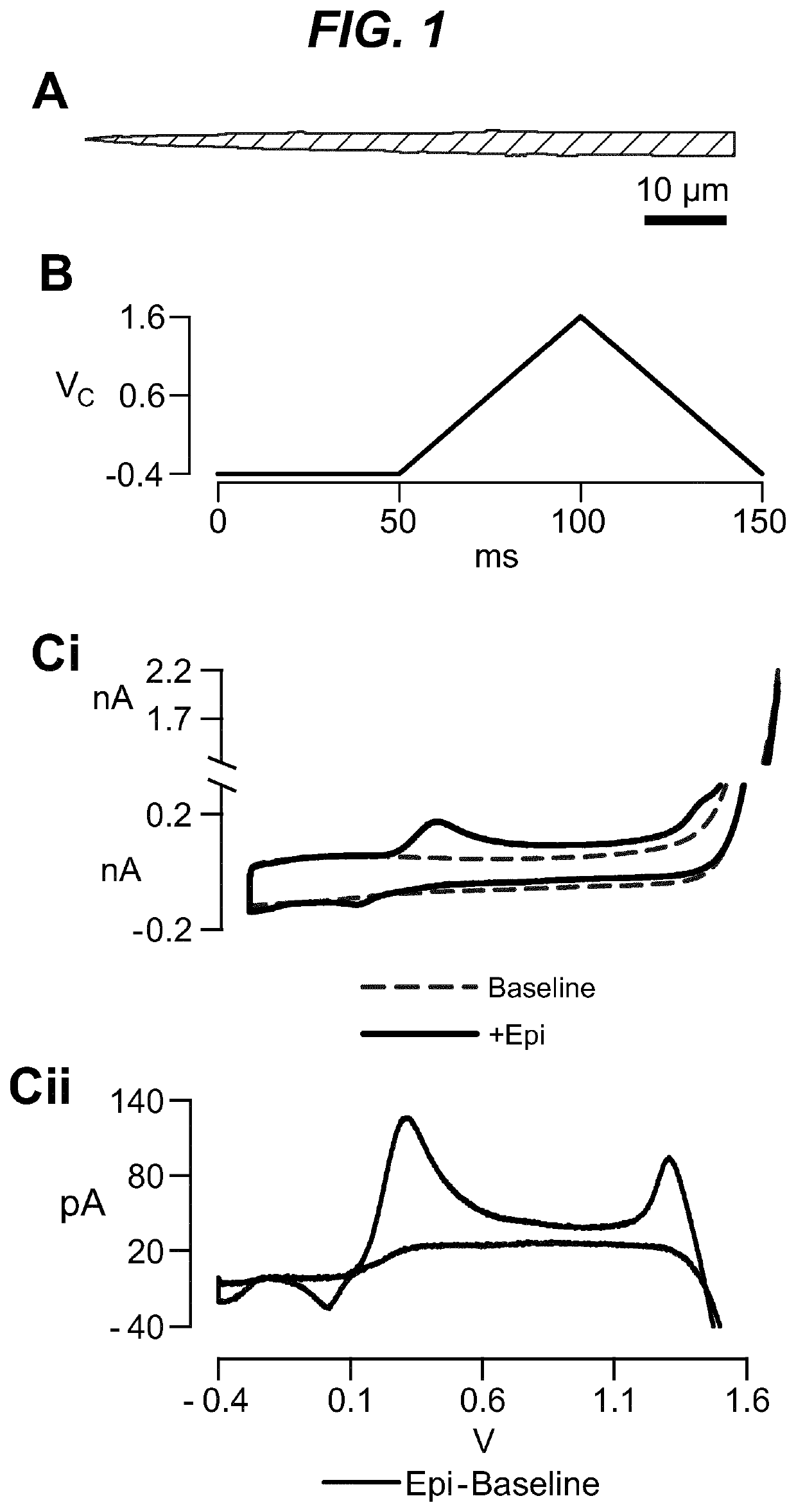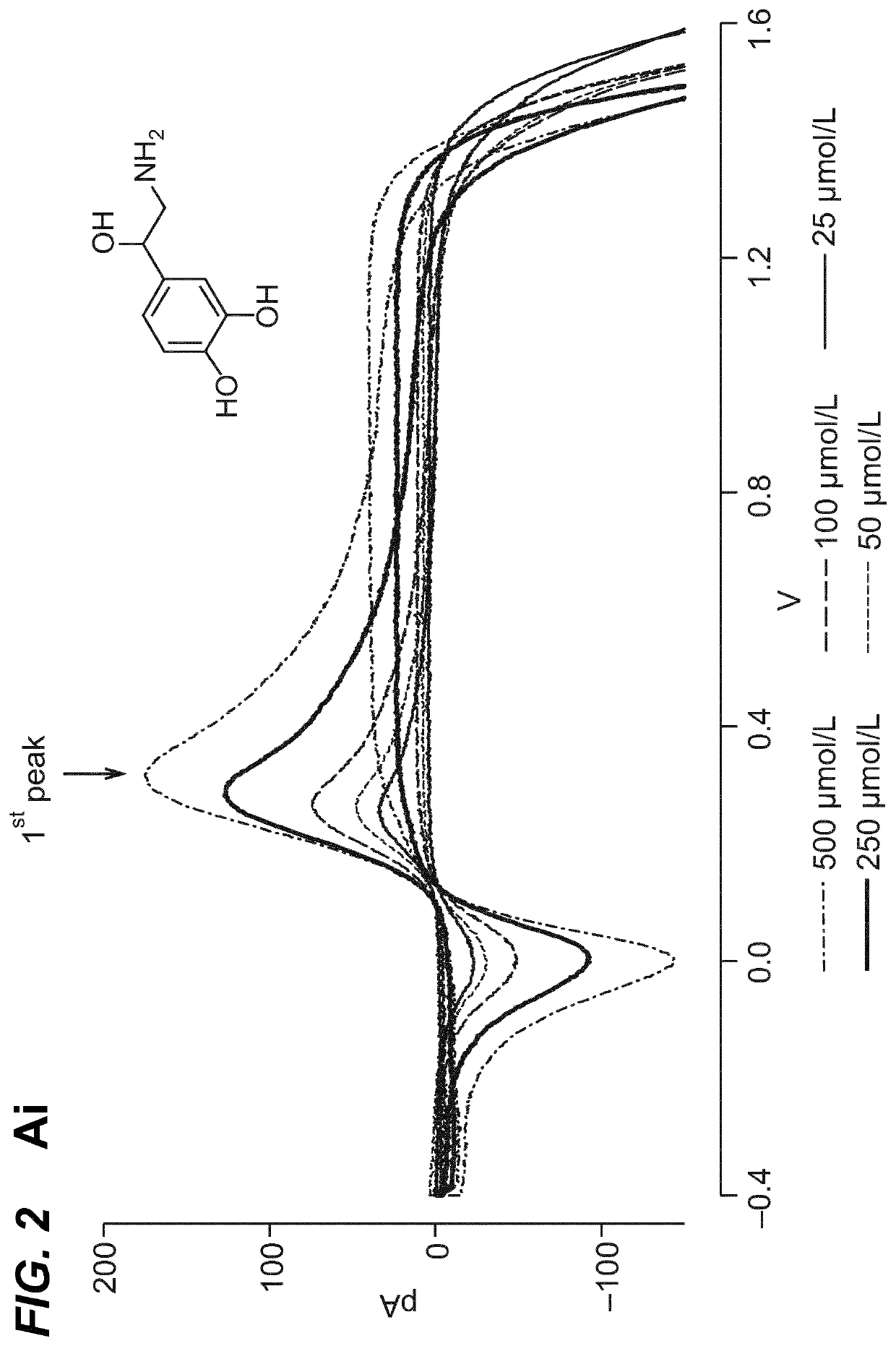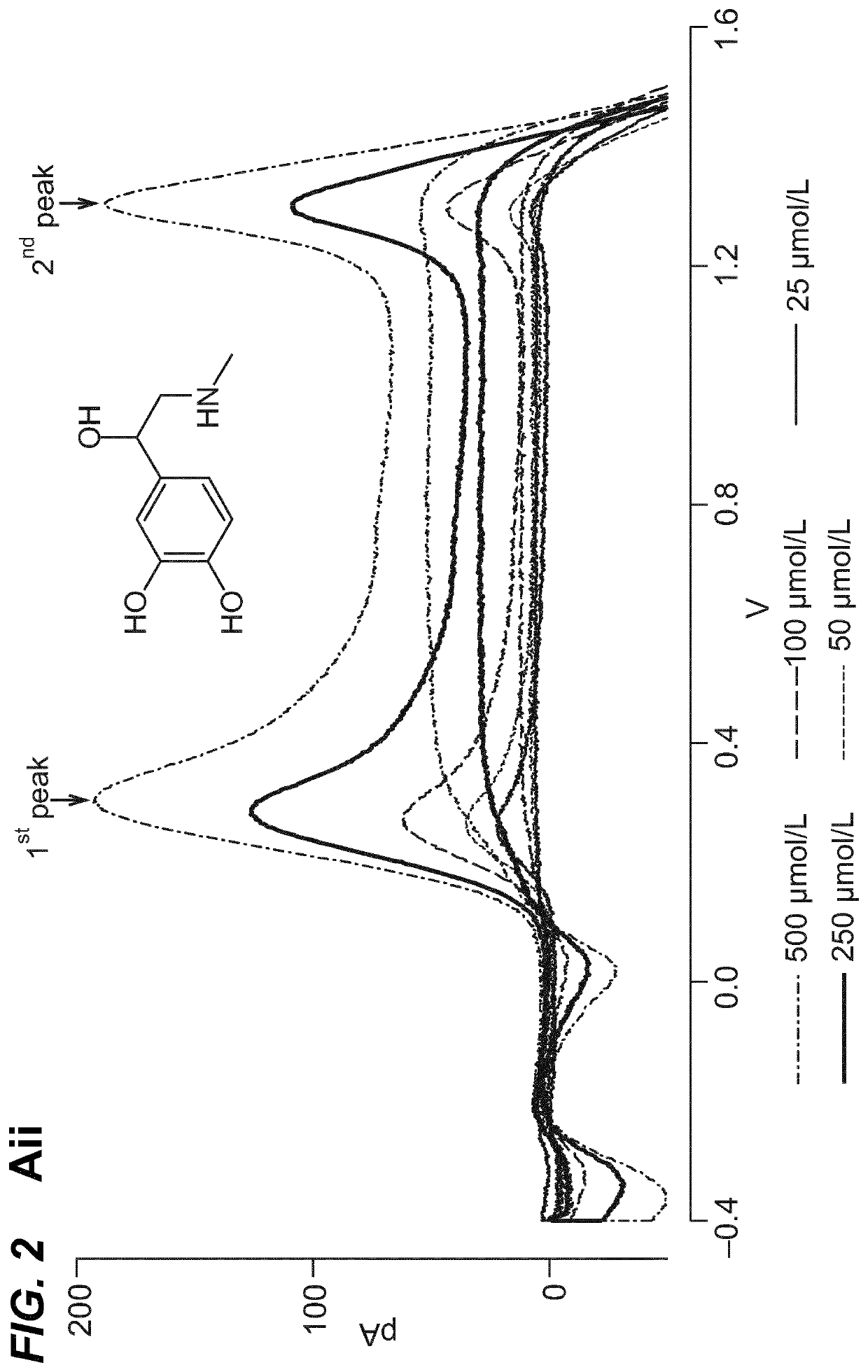Neuromodulation of adrenal gland
a technology of adrenal glands and neuromodulation, applied in the field of neuromodulation of adrenal glands, can solve the problems of rapid catecholamine secretion, and achieve the effect of substantially persistent modulation of neural activity and reversible neural activity
- Summary
- Abstract
- Description
- Claims
- Application Information
AI Technical Summary
Benefits of technology
Problems solved by technology
Method used
Image
Examples
example 1
[0134]An implantable system according to Example 1 comprises a first electrode attachable to (i.e. for placement on or around) the anterior division of the branch of the GSN supplying the adrenal gland between the suprarenal ganglion and the adrenal gland and a second electrode attachable to the posterior division of the branch of the GSN supplying the adrenal gland between the suprarenal ganglion and the adrenal gland. The electrodes are platinum / iridium parallel bipolar electrodes (FHC, Bowdoin, Me., USA), but multi-pole cuff electrode (CorTec; Freiburg Germany) may be used instead. The electrodes can be the same, or different.
[0135]The implantable system comprises a signal generator coupled to the first and second electrodes and capable of delivering a) an electrical signal to both electrodes to deliver that signal to each division independently; and / or b) a first electrical signal to the first electrode to deliver the first signal to the anterior division and a second, different...
example 2
[0136]An implantable system according to Example 2 comprises at least one electrode attachable to (i.e. for placement on or around) both the anterior and posterior divisions of the branch of the GSN supplying the adrenal gland between the suprarenal ganglion and the adrenal gland. The electrode may be as in Example 1, or different.
[0137]The implantable system comprises a signal generator coupled to the electrodes and capable of delivering an electrical signal to the electrode to deliver that signal to both divisions of the branch of the GSN supplying the adrenal gland between the suprarenal ganglion and the adrenal gland together, and thus to the whole branch of the GSN supplying the adrenal gland between the suprarenal ganglion and the adrenal gland.
[0138]In a modified version of Example 2, the at least one electrode is attachable to (i.e. for placement on or around) to the GSN above or below the divisions to deliver the signal to the branch of the GSN supplying the adrenal gland b...
example 3
[0139]An implantable system according to Example 3 comprises first and second electrodes, in accordance with those of Example 1, and a third electrode in accordance with either of those in Example 2.
[0140]The implantable system further comprises a signal generator coupled to the electrodes and capable of delivering electrical signals to either or the both division(s) of the branch of the GSN supplying the adrenal gland between the suprarenal ganglion and the adrenal gland independently, and to the whole branch of the GSN supplying the adrenal gland between the suprarenal ganglion and the adrenal gland. The signal generator may be configured to deliver a signal to one of the first or second electrodes, whilst not delivering a signal to the other, and also to deliver a signal to the third electrode whilst not delivering a signal to one or both of the first and second electrodes. This configuration allows the implantable system to deliver a signal to one or both division(s) of the bran...
PUM
 Login to View More
Login to View More Abstract
Description
Claims
Application Information
 Login to View More
Login to View More - R&D
- Intellectual Property
- Life Sciences
- Materials
- Tech Scout
- Unparalleled Data Quality
- Higher Quality Content
- 60% Fewer Hallucinations
Browse by: Latest US Patents, China's latest patents, Technical Efficacy Thesaurus, Application Domain, Technology Topic, Popular Technical Reports.
© 2025 PatSnap. All rights reserved.Legal|Privacy policy|Modern Slavery Act Transparency Statement|Sitemap|About US| Contact US: help@patsnap.com



